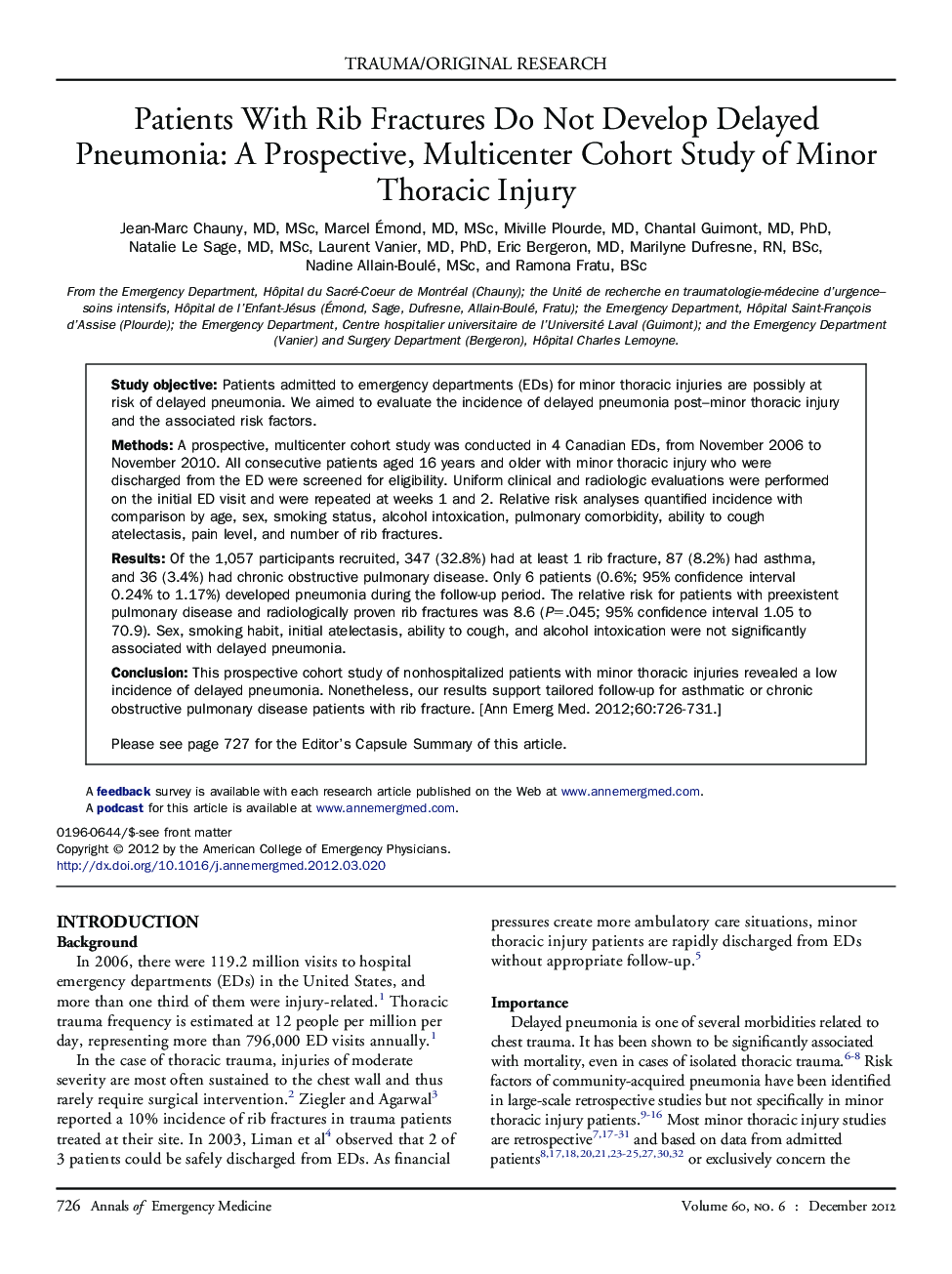| Article ID | Journal | Published Year | Pages | File Type |
|---|---|---|---|---|
| 3229660 | Annals of Emergency Medicine | 2012 | 6 Pages |
Study objectivePatients admitted to emergency departments (EDs) for minor thoracic injuries are possibly at risk of delayed pneumonia. We aimed to evaluate the incidence of delayed pneumonia post–minor thoracic injury and the associated risk factors.MethodsA prospective, multicenter cohort study was conducted in 4 Canadian EDs, from November 2006 to November 2010. All consecutive patients aged 16 years and older with minor thoracic injury who were discharged from the ED were screened for eligibility. Uniform clinical and radiologic evaluations were performed on the initial ED visit and were repeated at weeks 1 and 2. Relative risk analyses quantified incidence with comparison by age, sex, smoking status, alcohol intoxication, pulmonary comorbidity, ability to cough atelectasis, pain level, and number of rib fractures.ResultsOf the 1,057 participants recruited, 347 (32.8%) had at least 1 rib fracture, 87 (8.2%) had asthma, and 36 (3.4%) had chronic obstructive pulmonary disease. Only 6 patients (0.6%; 95% confidence interval 0.24% to 1.17%) developed pneumonia during the follow-up period. The relative risk for patients with preexistent pulmonary disease and radiologically proven rib fractures was 8.6 (P=.045; 95% confidence interval 1.05 to 70.9). Sex, smoking habit, initial atelectasis, ability to cough, and alcohol intoxication were not significantly associated with delayed pneumonia.ConclusionThis prospective cohort study of nonhospitalized patients with minor thoracic injuries revealed a low incidence of delayed pneumonia. Nonetheless, our results support tailored follow-up for asthmatic or chronic obstructive pulmonary disease patients with rib fracture.
